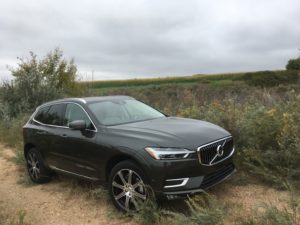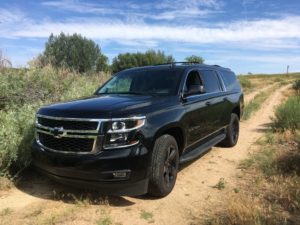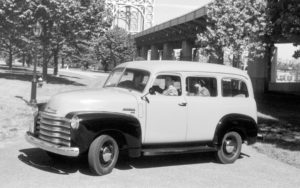
Meet the Toyota C-HR, an all-new car on the U.S. market, an ’18 model, quirky as can be, yet it drew all sorts of interest in fun drives all over the area.
It’s considered a subcompact sport utility vehicle, yet offers no all-wheel-drive option, only front-drive.
Toyota says the C-HR naming is for Coupe High-Rider. Coupe? It’s got four doors, even though the handles for the rear doors are hidden up high in the C pillar near the roofline.
Created to be a Scion, the C-HR was still in conceptual stage when Toyota killed its Scion youth division, then directed the new “coupe” to its (Toyota’s) powerful stable. The C-HR is built in a Toyota assembly plant in Sakarya, Turkey.
A bright exterior finish, “iceberg/radiant green with white top,” is an eyecatcher, along with the funky style at the SUV’s rear – where a spoiler overhangs a lightly sloped rear window and bulky looking hatch.
The car’s bright finish and nontraditional styling attracted comments wherever I parked it.
For its style, the Toyota probably competes most closely with the Nissan Juke. Among others in the subcompact field are the Mazda CX-3, Honda HR-V, Jeep Renegade, Mini Countryman, Fiat 500X. To be competitive in Colorado, I would think the Toyota will be forced to add an AWD option, which the others already have.
Wheelbase for the C-HR is 103.9 inches, with overall length of 171.2, width 70.7 and height 61.6. Its track is a narrow 60 inches and ground clearance only 5.9 inches. Curb weight around 3,300 pounds is a couple hundred heavier than most competitive models.
With a 141-horsepower, 2.0-liter 4-cylinder engine and continuously variable transmission, acceleration is somewhat slow off the line, then comes on stronger through midrange. The ride is good and handling is impressive, with little body lean. A steering-assist system lightly guides the car back into its lane if it wanders near the striping. Front struts and double wishbone rear make up the suspension. It rides on Dunlop Sport 225/50R 18 tires.
With a 55/45 split of highway/city driving, the C-HR averaged 26.9 miles per gallon. Its EPA estimate is 27/31.
Front seats are supportive and comfortable; the rear seating area offers good headroom, though legroom and footroom are tight. A tablet holder ($99 option) is mounted to the back of the front passenger headrest for use by a rear-seat occupant. Cargo space under the rear hatch is 19 cubic feet, which expands to 36.4 feet with the rear seats folded.
The C-HR XLE carries sticker price of $25,364, which includes hands-free phone capability and music streaming via Bluetooth, dual-zone automatic climate control, rear-window wiper and defogger, electric power-assisted steering, 7-inch touchscreen display for audio. It had no satellite radio.



